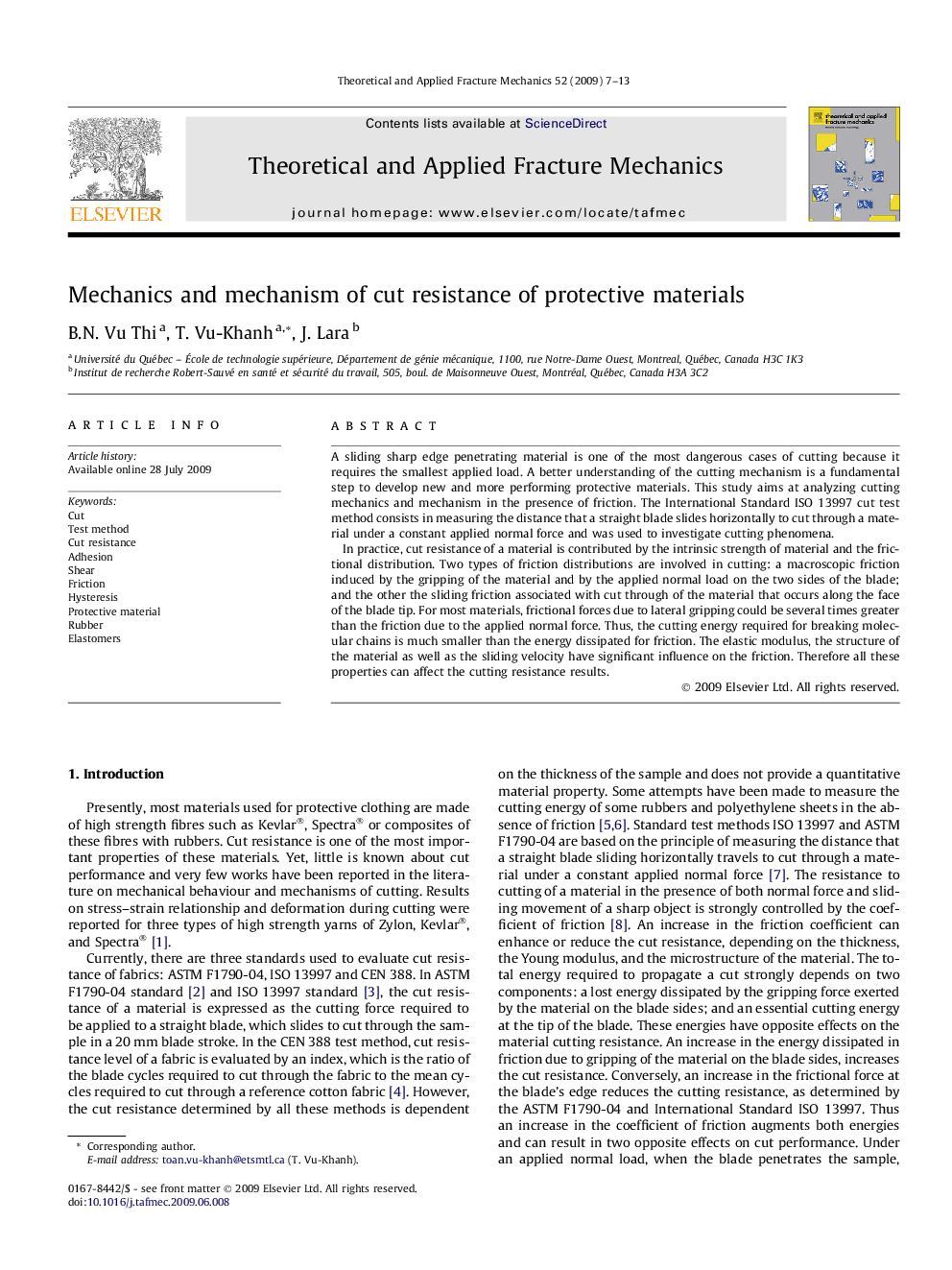| Article ID | Journal | Published Year | Pages | File Type |
|---|---|---|---|---|
| 804974 | Theoretical and Applied Fracture Mechanics | 2009 | 7 Pages |
A sliding sharp edge penetrating material is one of the most dangerous cases of cutting because it requires the smallest applied load. A better understanding of the cutting mechanism is a fundamental step to develop new and more performing protective materials. This study aims at analyzing cutting mechanics and mechanism in the presence of friction. The International Standard ISO 13997 cut test method consists in measuring the distance that a straight blade slides horizontally to cut through a material under a constant applied normal force and was used to investigate cutting phenomena.In practice, cut resistance of a material is contributed by the intrinsic strength of material and the frictional distribution. Two types of friction distributions are involved in cutting: a macroscopic friction induced by the gripping of the material and by the applied normal load on the two sides of the blade; and the other the sliding friction associated with cut through of the material that occurs along the face of the blade tip. For most materials, frictional forces due to lateral gripping could be several times greater than the friction due to the applied normal force. Thus, the cutting energy required for breaking molecular chains is much smaller than the energy dissipated for friction. The elastic modulus, the structure of the material as well as the sliding velocity have significant influence on the friction. Therefore all these properties can affect the cutting resistance results.
